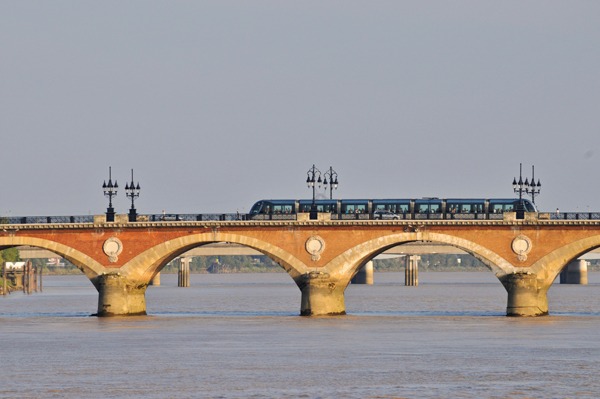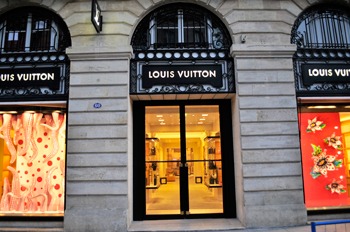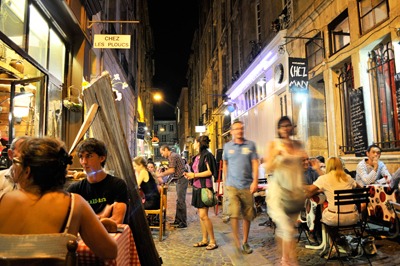The purchase of a Bordeaux chateau is always influenced, at least in part, by the beautiful city of Bordeaux itself. Although its chateaux do not always conform to the classic idea of French chateaux, many of them do and with about 8,000 in the region it is a dominant part of the Bordeaux landscape.
Many are surprised when they first experience Bordeaux – it is notably understated in the world media and tourist marketing, so to find such a jewel evokes a sense of accomplishment akin to uncovering a secret treasure. It is equally gratifying to learn that a population of over 1 million affords the city a sophistication and diversity that can support outstanding shopping and leisure activities, whilst maintaining an air of rural tranquillity in the surrounds. Some of the world’s wealthiest individuals own some of the world’s most expensive real estate in this region and yet it is all outside the urban area with respect to famous Bordeaux Chateaux.
Architecturally, Bordeaux feels very much like Paris with “Haussmann-esque” boulevards and tree-lined cobbled streets opening out into stunning café filled squares and plazas. Indeed some of the city was inspired by designs of Haussmann who was a resident in Bordeaux during the 1850’s.
The city became a powerful merchant trading area in the 14th century centering on its strategic waterways and the natural port with its access to the Atlantic. By the 19th century it was at its peak as a centre of European trade; wine of course dominating its core export to the world which in 1875 was 1.5 million hectolitres (it is only 1.8 million today). The wealth generated by this era is evident as the visitor walks the streets of Bordeaux – there is no doubt that this is both a great city and a grand city. Its €2 billion renovation was started by Mayor Alain Juppé in 1995 and once complete its city centre became Europe’s largest UNESCO listed area (1,810 classified hectares) crowned by France’s ‘second’ Opera – second only to Paris.

The first known vineyards date back 2,000 years and it was the Romans that most likely identified and exploited the natural environment and climate so well suited to wine growing. Bordeaux is the world’s largest wine region – there are approximately 120,000 hectares of vines here. Assuming a planting density of 6,000 vines per hectare (a conservative estimate – some properties will plant at 8,000 or even 10,000 vines per hectare) that makes for at least 720 million vines in Bordeaux alone, all pruned annually, each one by hand.
Bordeaux has 57 wine appellations, 10,000 wine-producing châteaux and 13,000 grape growers. With an annual production of approximately 850 million bottles, Bordeaux produces large quantities of everyday wine as well as some of the most expensive wines in the world, that combined creates an industry of some €14.5 billion per annum.
It is very easy to get excited about this region. The climate is fantastic with long warm summers but otherwise following a traditional seasonal pattern. The name Bordeaux of course suggests its proximity to water (Bord = next to or beside and eaux = waters) this is a reference to the massive Garonne and Dordogne rivers that converge in the Gironde estuary and secondarily of course the Atlantic only 40 kms to the west. For those that like a list here are some of the highlights:
- Skiing in Pyrenees 3 hours to the south
- Europe’s best surfing along the Atlantic coast south of the city
- Gorgeous uncrowded beaches
- Sailing in the Bassin d’Arcachon and out to the spectacular Ile de Ré
- Some of the best wines and dining in the world
- Excellent golfing
- The longest retail street in Europe
- All the major shopping marques: Hermes, Louis Vuitton, Cartier, Galeries Lafayette, Virgin etc.
- Low density un-crowded urban and rural environment
- TGV train service to Paris in 2 hours
- International airport – 40 mins to Paris and 1.5 hours to London for example.
Finally no discourse on Bordeaux would be complete without a mention of St Emilion. St Emilion is also a UNESCO listed area and, judging by the annual tourism numbers, its visitors think very highly of it too. In many ways it is the region’s wine capital sitting in the middle of some of the most prestigious and beautiful vineyards in the world.
It is hard to describe in words – but there is the most magical light in this region, a light that seduces, stimulates and calms residents and visitors alike. It is for this reason that the Bordeaux region is inexplicably charming and that wine lovers and those seeking the perfect French lifestyle will continue to visit and move here for years to come.
“Bordeaux population: 1 million”
“Language: French”
Currency: Euro
Downtime – Visiting vineyards, learning about wine, growing your own vines and best of all, drinking the best wine in the world.



